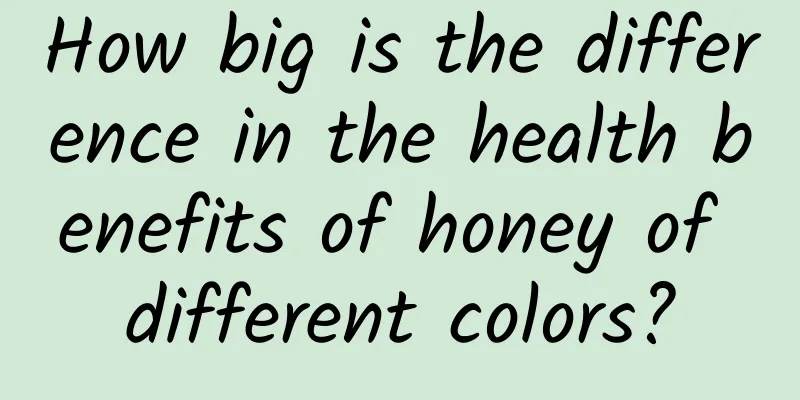How big is the difference in the health benefits of honey of different colors?

|
Image source: Pixabay The latest research results show that honey from different sources and colors has different health functions. Guo Xiali from the School of Life Sciences and Food Engineering of Nanchang University studied the chemical composition and antioxidant properties of honey from seven different sources, including acacia honey, astragalus honey, codonopsis honey, rhizoma coptis honey, longan honey, and jujube honey, providing a theoretical basis for evaluating the health functions of honey. The experiment used spectrophotometry to determine the color, total phenolic and total flavonoid content of honey: Using 23 phenolic compounds as reference substances, the phenolic compounds in honey were determined by high performance liquid chromatography (HPLC); finally, the antioxidant capacity of honey was determined. The correlation analysis of the above indicators showed that the larger the chromaticity value, the higher the total phenol and total flavonoid content in honey; the total phenol content of honey was significantly correlated with its antioxidant activity; overall, the darker the color of honey, the higher the total phenol and total flavonoid content, and the stronger its antioxidant capacity. This is similar to the research results of Jasna et al. Jasna et al. measured the chromaticity and total phenol content of honey in Slovenia, and found that the total phenol content was high in the darker honey types, such as fir honey, spruce honey, and forest honey, with total phenol content of 241.4 ± 39.5 mg/kg, 217.5 ± 20.6 mg/kg, and 233.9 ± 21.7 mg/kg, respectively. Compared with lighter honey, darker honey has higher total phenol and total flavonoid contents. This shows that honeys of different colors have different chemical compositions, and therefore different natural health functions. This provides some reference for consumers on how to choose high-quality honey. Because the stronger the total antioxidant capacity, the higher the activity of scavenging DPPH free radicals, and the better the health function. Source: Chongqing Industry-University-Research Cooperation Promotion Association Review experts: Xu Minglu, Chen Jie Statement: Except for original content and special notes, some pictures are from the Internet. They are not for commercial purposes and are only used as popular science materials. The copyright belongs to the original authors. If there is any infringement, please contact us to delete them. |
<<: From symptoms to treatment: A comprehensive look at Parkinson's disease
Recommend
What type of vaginitis is vulvar itching?
As the pace of modern life becomes faster and fas...
More than 200 million people are affected, and the incidence rate in women is higher than that in men! How to prevent thyroid nodules?
In recent years, many people have thyroid nodules...
Will delayed menstruation affect pregnancy? Gynecological experts answer questions
Many women experience delayed menstruation, which...
Can girls sweat steam during menstruation?
In fact, women are in a special time during their...
Will a girl get gynecological inflammation?
When we talk about gynecological diseases, the fi...
How many drops are there in the first menstrual period after abortion
Is it normal to have a small amount of menstrual ...
What to do if the follicle wall is thick and not broken
Female follicles are very important to women. Onl...
Who is suitable to eat bird’s nest? Are you eating right?
Bird's nest is a nutritional supplement known...
My aunt came for one day and then left.
Everyone reacts differently to menstruation. Some...
What causes breast hyperplasia? Learn about these 8 reasons early
Breast hyperplasia is a common gynecological dise...
How to make cherry milkshake? How to make cherries in vinegar?
Cherries have been cultivated in China for a long...
Why do women's private parts turn black?
Most Chinese women like fair skin, but as time go...
Does fallopian tube unblocking surgery hurt?
Does fallopian tube unblocking surgery hurt? In r...
What to eat to delay menstruation
Menstruation is a normal physiological phenomenon...
Do breast nodules require surgical treatment?
Breast nodules do not refer to a specific disease...









